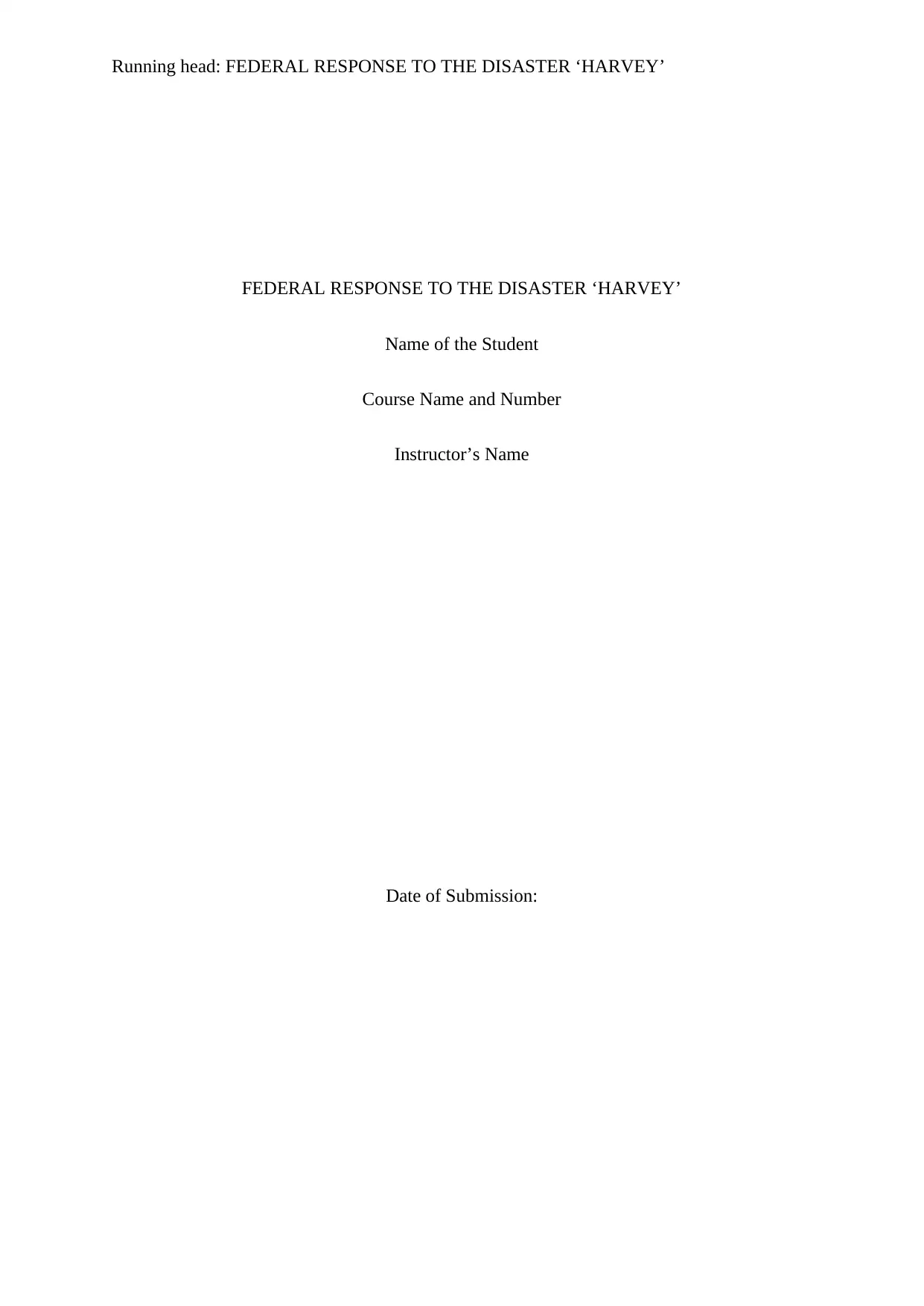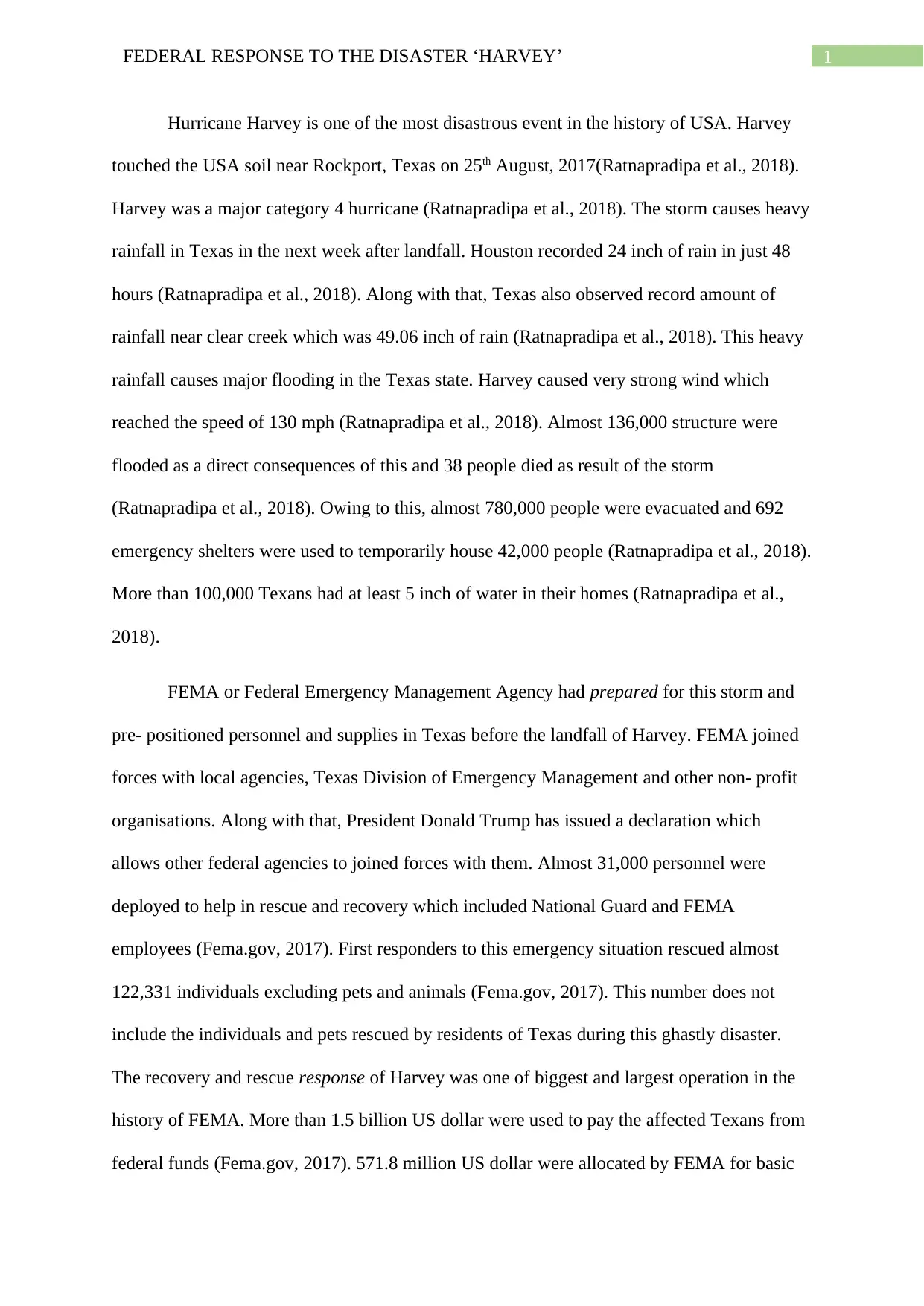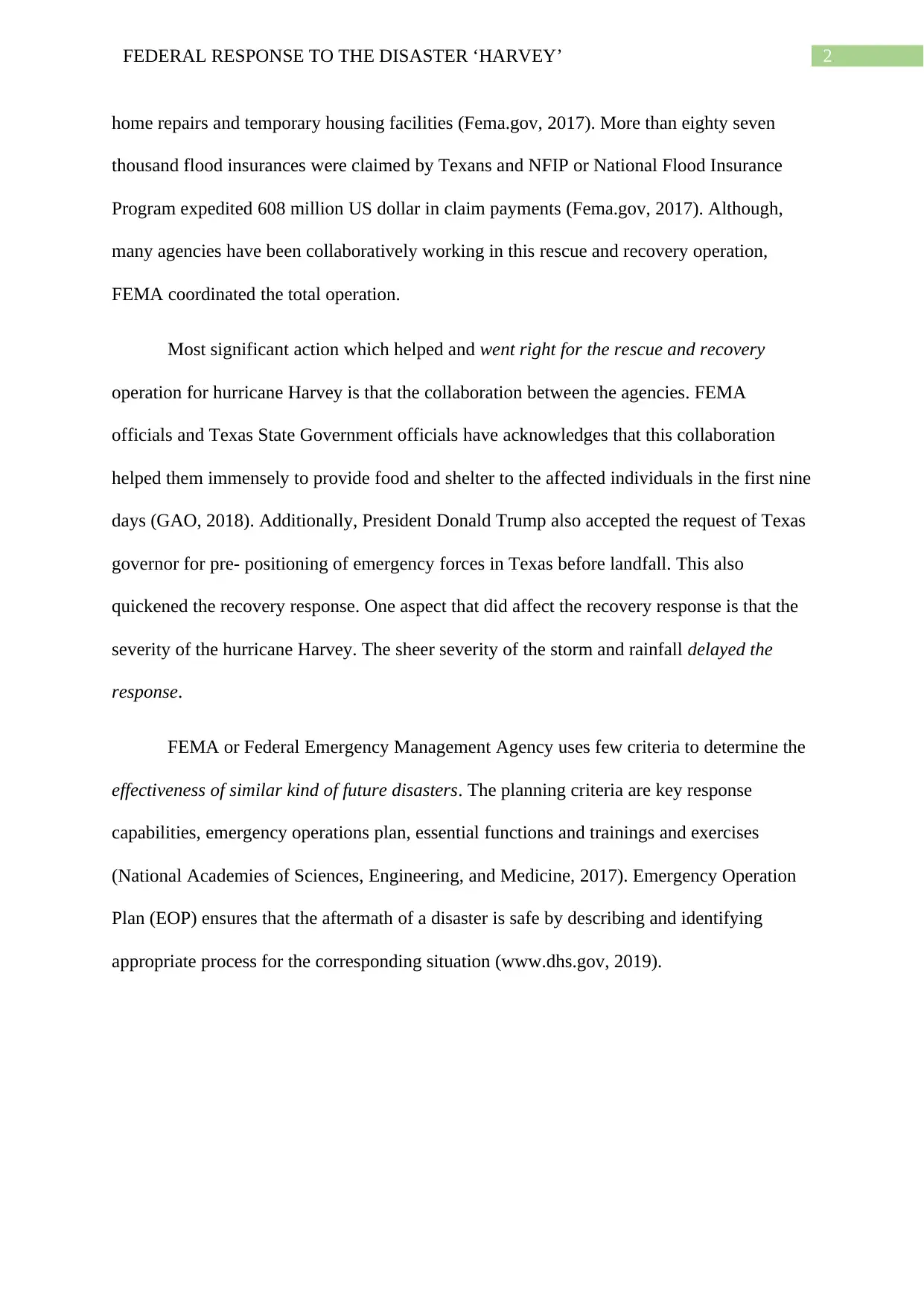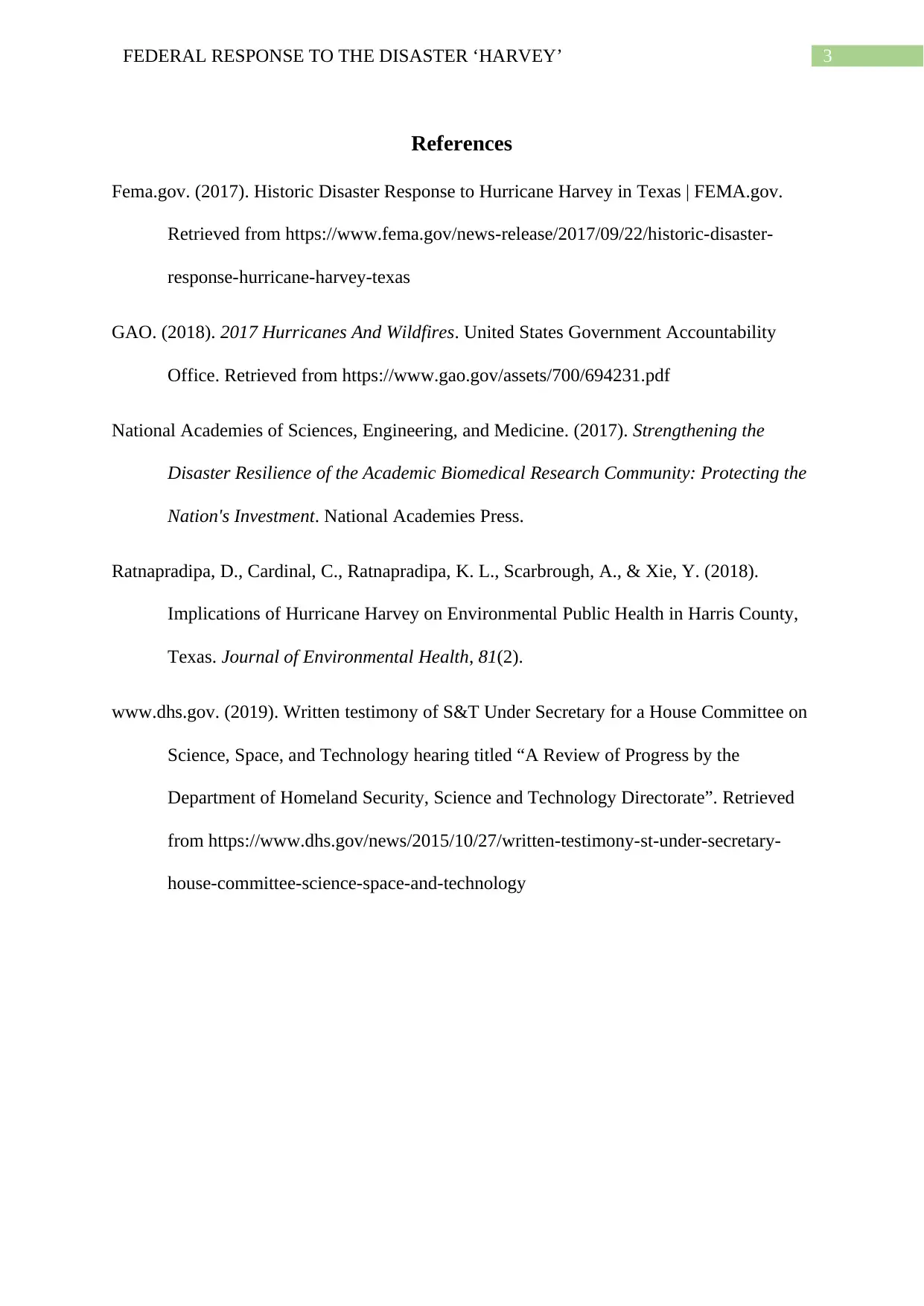HSM 497: Analysis of Federal Response to Hurricane Harvey Disaster
VerifiedAdded on 2023/04/23
|4
|910
|391
Report
AI Summary
This report provides a comprehensive analysis of the federal response to Hurricane Harvey, a devastating event that struck the USA in August 2017. The report details the hurricane's impact, including the heavy rainfall, strong winds, and widespread flooding that caused significant damage and loss of life in Texas. It examines the role of FEMA, the Federal Emergency Management Agency, in coordinating the rescue and recovery efforts, highlighting the pre-positioning of personnel and supplies, collaboration with local and state agencies, and the deployment of thousands of personnel. The report also discusses the financial assistance provided to affected Texans and the key aspects that contributed to the success of the response, such as inter-agency collaboration and pre-emptive measures. Furthermore, the report considers factors that affected the recovery response, such as the severity of the storm. Finally, the report touches upon the criteria FEMA uses to determine the effectiveness of future disaster responses, including planning criteria, emergency operation plans, essential functions, and training exercises.
1 out of 4








![[object Object]](/_next/static/media/star-bottom.7253800d.svg)